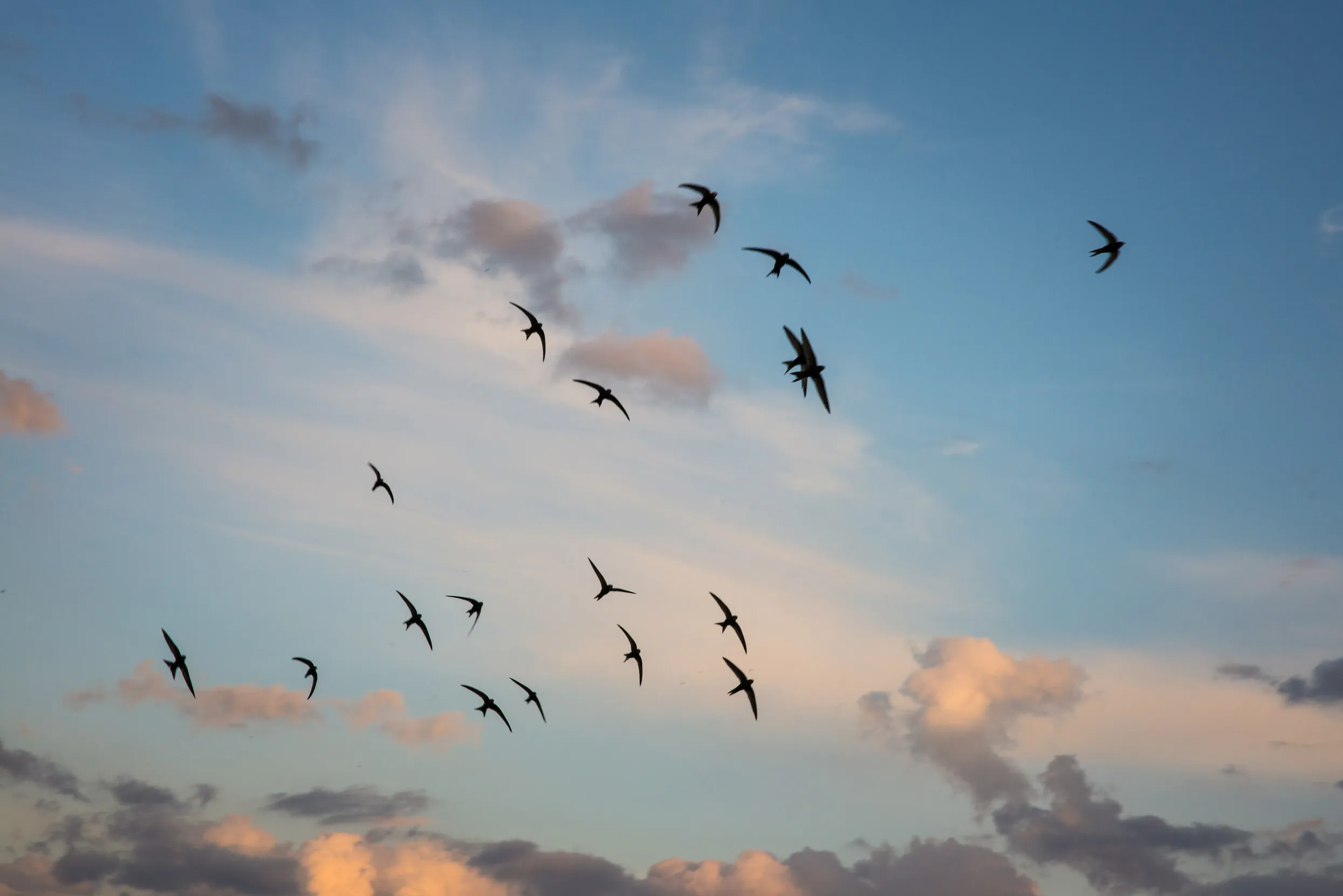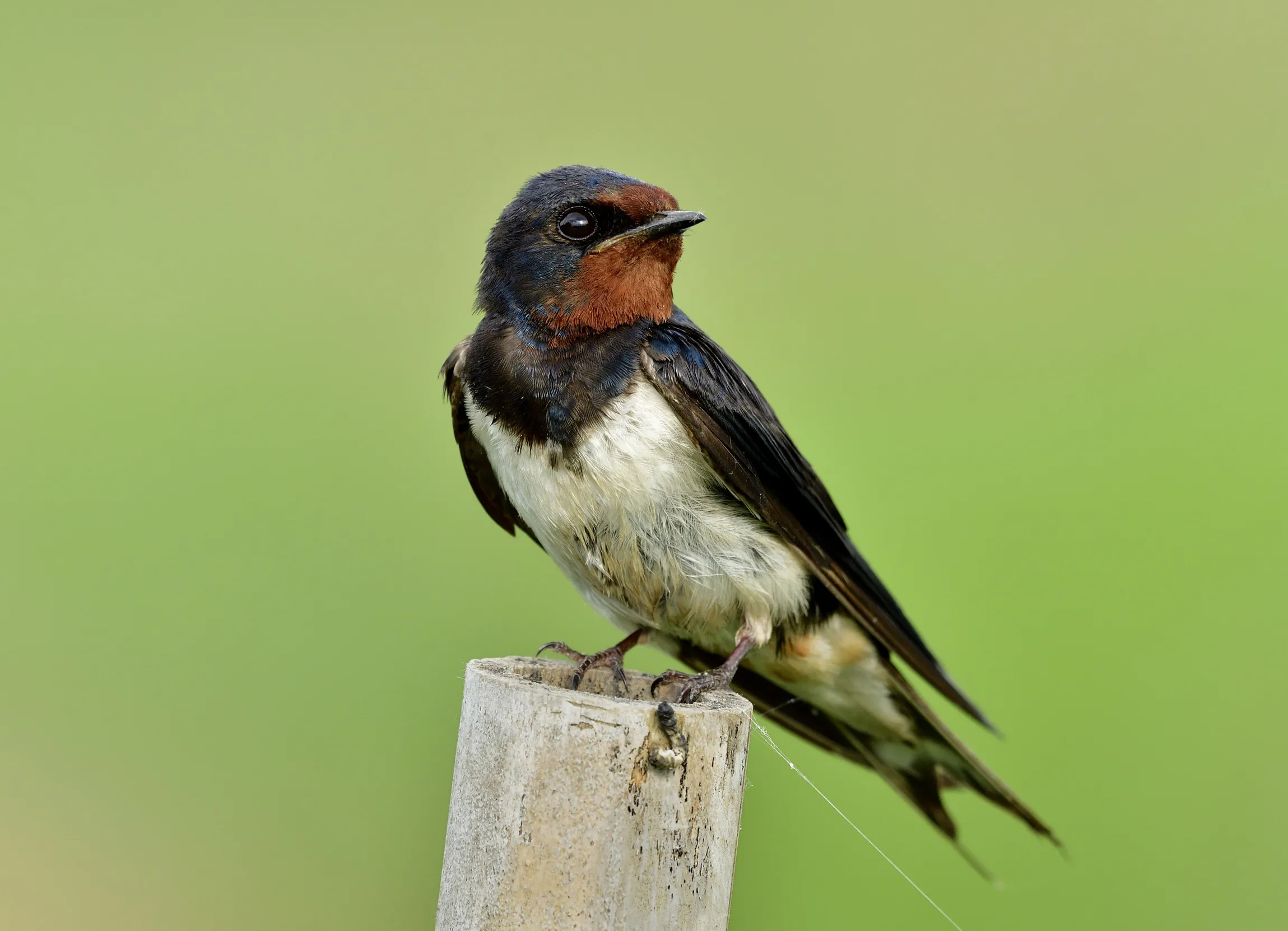Advice
Other ways to fundraise
Run, walk, cycle, bake or sell for nature. Whether you're a hare or a tortoise we'd love you to support the RSPB as you ...
Bird migration is one of the wonders of the natural world. Find out what makes birds fly thousands of miles and how they find their way.

Not all birds stay in the same place their whole lives. Some migrate to take advantage of seasonal resources, especially food, so that they can breed successfully or simply survive. Some migrations are short, but many birds make truly epic journeys, crossing continents, deserts and oceans.
In the UK, we see a surge in bird migration during the spring, when summer visitors like Swifts and Cuckoos arrive, and then again in the autumn, when waders, wildfowl and a whole host of other winter visitors return and summer visitors depart. Birds use a wide range of techniques to navigate along their ‘flyways’ – superhighways for bird migration. They can use physical landmarks like rivers, coastlines or mountains, they can navigate using the sun, the stars, the Earth’s magnetic field, their sense of smell, or even just follow other birds. But no matter how they do it, migration is a truly incredible feat.

In the UK, the best-known migrating birds are probably ones that cover long distances, such as Swallows. Most UK-breeding Swallows winter in southern Africa. But you might be surprised to learn how many other birds migrate too. Even the Blackbirds in your garden in January could well be winter visitors from northern Europe.
Globally, around 2,000 species of bird are regular migrants. That’s about 20% of the world's total. But some parts of the world have a higher proportion of migrants than others.
In northern regions such as Canada and Scandinavia, and temperate regions, such as the UK, about half the species migrate – especially insect-eaters. These species visit in spring to take advantage of the high numbers of insects, but wouldn’t have enough food if they stayed here through winter.
In tropical regions, such as the Amazon rainforest, a lower proportion of species migrate long distances, since the climate and food supply there are more abundant and consistent all year round.

Bird migration behaviour has evolved over long periods of time. Navigation is often ‘hard-wired’ and shaped by environmental cues like changes in temperature or day length. Once an individual bird has successfully completed its first annual migration cycle, they often simply repeat the same pattern throughout their lives. If it works once, it’s likely to work again.
So what cues do birds use to help them follow a route in the first place? Many use obvious physical landmarks like mountain ranges, river valleys or coastlines to guide them. Others travel more directly, even if this means crossing dangerous stretches of desert or sea. Routes often meet at certain junctions, such as mountain passes or narrow sea crossings. Many migrating birds return along roughly the same route they followed on their outward journey. Others return a different way, maybe taking advantage of different winds and weather systems or food supplies only available at certain locations at different times of year.
A bird's body tells it exactly when to migrate. Each year, at the same time, glands in its body release hormones into its system. Environmental cues, including the gradually changing day length as days get shorter in late summer and longer in early spring, cause this to happen automatically. These hormones make birds behave differently. In spring, hormones also start preparing a bird for breeding. This change is another signal to set off.
For a small number of bird species – swans, geese and cranes are examples – migration of young birds is learnt from the behaviour of parents. The young follow their parents for several months, ensuring that they migrate at the right time, follow the right route and learn where feeding sites are along the way.
-flying-over-mountains-sunrise.jpg)
Spring and summer wouldn’t be the same without these brilliant birds soaring overhead or serenading us with their song. And autumn or winter would be so much drearier without the wonderful waders, wildfowl and other birds that spend the colder months with us.
But fewer and fewer of them are returning each year, with Cuckoos, Turtle Doves and Spotted Flycatchers all in real decline. Swifts and House Martins, which choose to live so closely alongside us, have also joined the Red List of Birds of Conservation Concern in the UK.
There are many reasons behind these declines, but it's clear climate change and habitat loss are playing a key part.
Migration has evolved to enable species to survive but birds may face many dangers on the way. These include:
Bad weather, especially extreme events. Anything from sandstorms and wildfires to storms at sea can put birds in serious danger. New arrivals need to start feeding quickly, so bad weather at their destination, like late snowfall, can also spell disaster.
Birds can get lost, despite their navigation skills. Youngsters on their first journey south can easily go astray, especially if they meet bad weather.
Collision course. Tall man-made objects can be deadly to migrating birds. Skyscrapers with reflective glass walls are among the worst for migrating land birds. If power lines and wind turbines are placed along key migration routes, they can cause collision problems for larger soaring migratory birds such as large birds of prey, storks, cranes, etc.
Loss of resting spots. Migrating birds need safe stop-offs where they can rest and eat along the way. In the UK, wetlands are havens for migrants. If people damage these places or disturb birds while they’re roosting and feeding, the birds have nowhere to recover and refuel.
Predators. Many predators have migrating birds on their menu. Resting along the way can be risky.
Hunting – Migrating birds may be the target of legal hunting or illegal killing such as trapping during their journeys.

Migration routes cross many different countries, so we’re working with other organisations and governments all over the world to support wild birds.
Many of our reserves provide safe havens for migrating birds, whether they’re spending the summer or simply stopping off to rest and refuel on their way. But we can’t work in isolation and to help protect the migratory birds that pass through the UK, we are working with partners all along the East Atlantic Flyway – a bird superhighway that stretches from the Arctic to southern Africa
Within the UK, some of our most important wetlands for migratory waterbirds are found along the east coast of England from the Humber to the Thames. This stretch of coast is so important it was even added to the UK's Tentative List of World Heritage Sites in 2023 – the first step to joining iconic places like the Great Barrier Reef as a UNESCO World Heritage Site. Work is now underway with partners along the east coast to develop a full application for UNESCO consideration.
